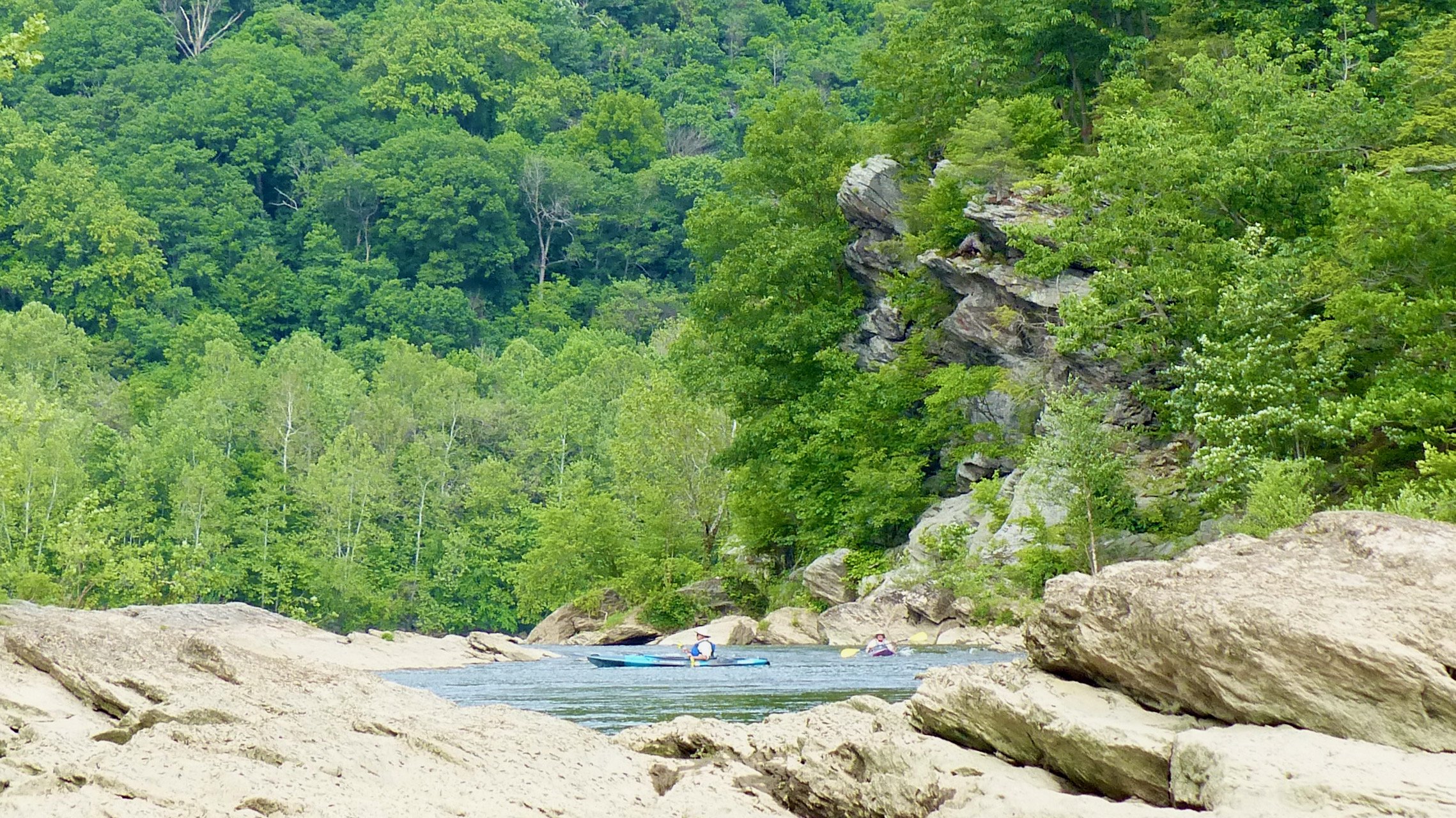
Conowingo Islands
Kayaking the Lower Susquehanna River
by Teresa Maier
Welcome to your kayak rental adventure on the Lower Susquehanna River! The Susquehanna River meanders 444 miles from near Cooperstown, New York, until it empties into the Chesapeake Bay in Maryland. Scientists consider it one of the oldest rivers in the world, older even than the mountains through which it flows.
Conowingo Islands
Nestled between the Holtwood dam just upriver and the Conowingo Reservoir downriver, and bound in by the steep banks of the river hills, these 60 or so rocky islands form a unique and strikingly picturesque landscape. Unlike most islands in the Susquehanna River, which were formed by deposits of sediment, the Conowingo islands are exposed bedrock. This wonderland of islands and rock formations includes towering rocks, huge potholes, hidden coves, and sandy beaches. Each island is different, and they are all fascinating.
Conowingo Reservoir
This deep portion of the Susquehanna River, formed by the Conowingo Dam, is a refuge for waterfowl as they follow the north-south migratory route. Steep-sided banks along the river form air currents that migratory birds of prey follow in fall. Mount Johnson Island, the world’s first bald eagle sanctuary, is a little over three miles downstream from the Muddy Creek Access.
Potholes
Many of the schist and gneiss rocks that make up these islands are marked with potholes. River potholes are places where swirling river currents, heavy with sediment or stones, grind the bedrock away forming a bowl shaped or cylindrical hollow.
Loch 15
Just off the parking lot of the Muddy Creek Access are the well preserved remains of Lock 15 of the Susquehanna & Tidewater Canal. Opened in 1840, the Susquehanna & Tidewater Canal paralleled the river for 43 miles, between Wrightsville, Pennsylvania and Havre de Grace, Maryland. There were 29 locks that helped canal boats over the 233 foot elevation difference of the route. The canal operated until 1894.
Muddy Run Pumped Storage Hydroelectric Station
Muddy Run Pumped Storage can be seen on the Lancaster shore east of the islands. Water cycles between the river and a storage pond created by the damming of Muddy Run at the top of the hill. The power company uses off peak electricity to pump river water to the storage pond. Then, in times of peak power demand, the water is released to flow down hill and turn the turbines, creating electricity.
Eagles
Bald Eagles are a common sight while kayaking on the Lower Susquehanna River. Eagles stand 31-37 inches tall with a wingspan up to 7 feet. They have pure white heads and tails that contrast with their dark brown bodies. Eagles are often seen soaring and gliding in circles as they search for prey, as well as resting on river rocks or in trees. They are distinguished from the similar-looking turkey vulture by their large heads, long wings held straight out, and smooth (not teetering) flight.
Fish
The Susquehanna River is a popular spot for fishing. Known especially for its smallmouth bass, the river also has largemouth bass, catfish, rock bass, carp, and sunfish, among others.
Osprey
There are osprey nests in the area around the Conowingo Islands. About 24 inches long with a 5 1/2 foot wingspan, these hawks have brown backs, white bellies, and white heads with a brown streak across the eyes. Their wings have a distinct kink and form an M shape when seen from below. The are often seen flying with stiff, steady wingbeats over shallow water, before diving feet first to snatch a fish from the water.
Peregrine Falcons
Peregrine Falcons nest some years on the underside of the Norman Wood Bridge. Blue-grey above with dark bars on their undersides, these birds are 14-19 inches long with a wingspan around 40 inches. These powerful birds are very fast fliers averaging 25-34 mph in traveling flight and may reach speeds of 200mph when plunging from heights towards its prey.
Fish
The Lower Susquehanna River is a popular spot for fishing. Known especially for its smallmouth bass, the river also has largemouth bass, catfish, rock bass, carp, and sunfish, among others.
